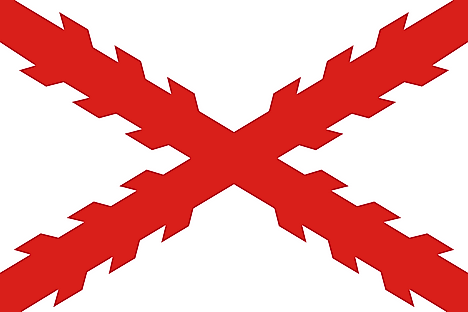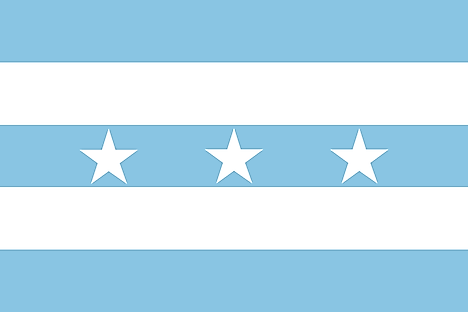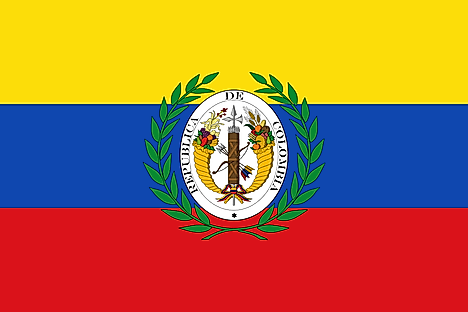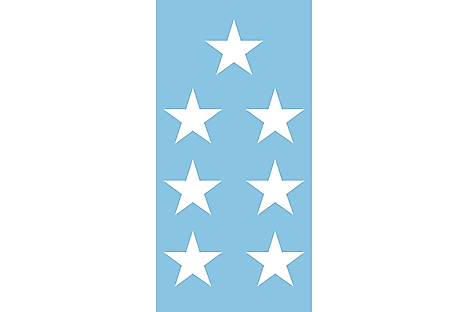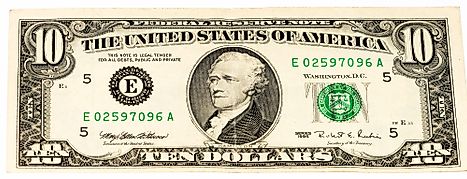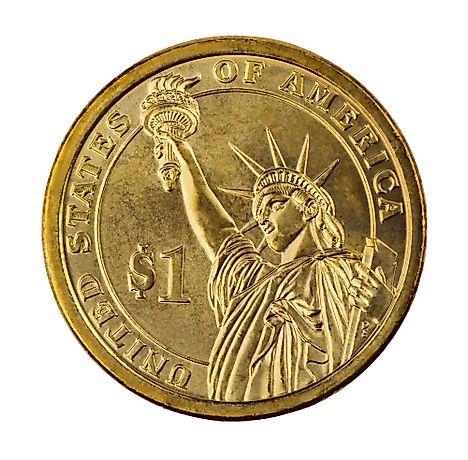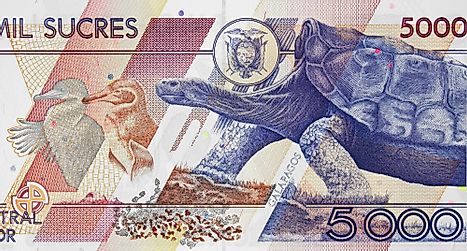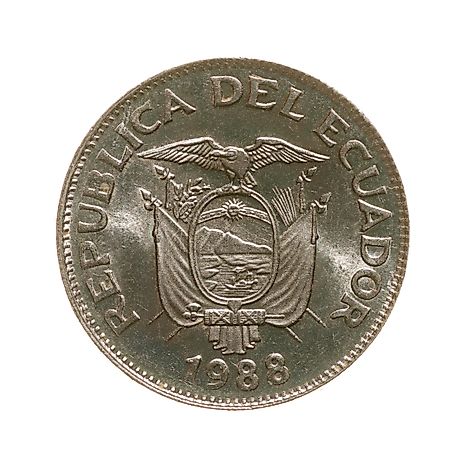Flags, Symbols & Currency of Ecuador
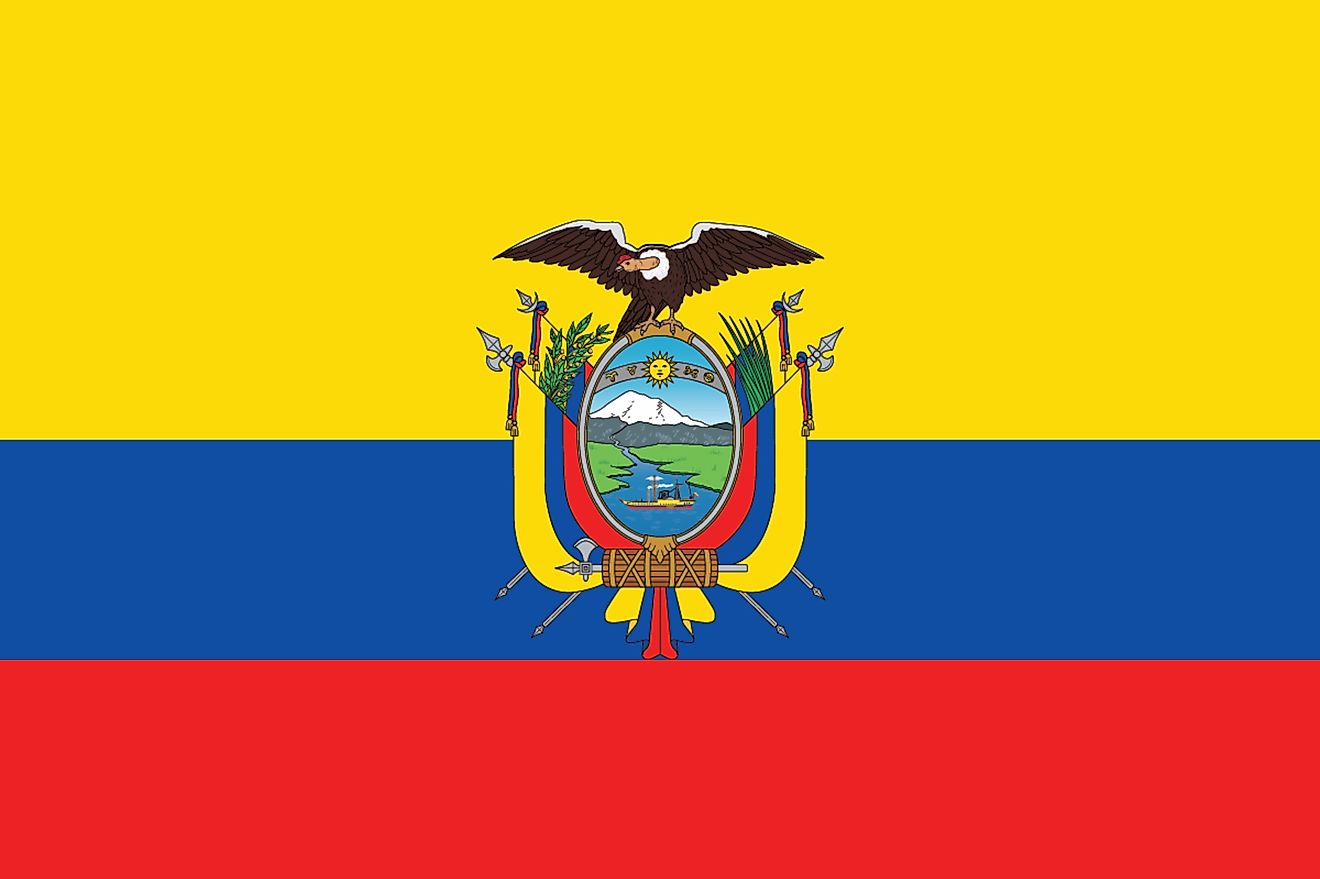
The National Flag of Ecuador was officially adopted on September 26, 1860.
The National Flag of Ecuador features three horizontal bands of yellow (top, double-width), blue, and red; with the coat of arms superimposed at the center of the flag. The yellow color represents sunshine, grain, mineral wealth, and fertile soil. The blue color symbolizes the sky, sea, and rivers. The red color represents the blood of patriots spilled during the struggle for freedom and justice. The flag has a length-to-width proportion ratio of 2:3.
History of the Flag of Ecuador
The flags of Colombia, Ecuador, and Venezuela share are similar in that they all are made up of horizontal stripes of the same color and order, but are not identical. All three countries adopted the three main colors of the banner of Gran Colombia that was designed by Francisco de Miranda, the South American revolutionist, and adventurer. The flag was inspired by the colors of the Burger Guard of Hamburg, which Miranda saw during an expedition in Germany. On March 12, 1806, Miranda raised the yellow-blue-red flag on a hired ship during his expedition to Venezuela, marking the first time the flag was used as a national symbol. After Spaniard Sebastián de Benalcáza conquered Ecuador, he raised the flag of the Spanish Empire as a symbol of conquest over the land. On August 10, 1809, rebels called for independence by raising a red flag, and in September 1820 Gabriel Garcia Moreno assumed power after leading his forces in the Battle of Guayaquil. Moreno readopted the yellow-blue-red flag, replacing a flag that consisted of white, blue and white vertical stripes, with seven white stars, representing the provinces of Ecuador, on the blue stripe.
Symbols of Ecuador
The National Coat of Arms of Ecuador

The current official Coat of Arms of Ecuador was adopted on October 31, 1900. It features a shield that is composed of Mount Chimborazo and the Guayas river which symbolize the beauty and wealth of the country. Above the land is a sun surrounded by the astrological signs for Aries, Taurus, Gemini, and Cancer. These represent the months of March through July and symbolizes the duration of the March Revolution of 1845. The bird atop the shield is the Andean Condor, and its outstretched wings symbolize the power, greatness, and strength of Ecuador. The shield is flanked by the four flags of Ecuador. The laurel on the left represents the victories of the republic, while the palm leaf on the right side is a symbol of the martyrs of the fight for independence and liberty. The Fasces below the shield represents republican dignity.
National Motto
"Dios, patria y libertad" ("God, homeland and liberty.")
National Anthem
- Anthem Title: "¡Salve, Oh Patria!" (""We Salute You, Our Homeland")
- Music Composer: Antonio Neumane
- Lyricist: Juan León Mera
- Date of Adoption: November 23, 1948.
"¡Salve, Oh Patria!" ("We Salute You, Our Homeland") is the national anthem of Ecuador. The music of the anthem have been composed by Antonio Neumane. The lyrics of the anthem have been authored by a poet named Juan León Mera. The anthem was officially adopted as the national anthem of Ecuador on November 23, 1948.
"¡Salve, Oh Patria!" (Spanish)
Coro:
¡Salve, Oh Patria, mil veces, oh Patria!
¡Gloria a ti, gloria a ti!
Ya tu pecho, tu pecho, rebosa,
gozo y paz ya tu pecho rebosa;
? Y tu frente, tu frente radiosa,
Más que el sol contemplamos lucir. ?
2da Estrofa:
Los primeros, los hijos del suelo
que, soberbio, el Pichincha decora,
te aclamaron por siempre señora
y vertieron su sangre por ti.
Dios miró y aceptó el holocausto
y esa sangre fue germen fecundo
de otros héroes que atónito el mundo
vió en tu torno a millares surgir.
? ¡A millares surgir! ?
Coro:
"We Salute You, Our Homeland"
Chorus:
We greet you, Oh Fatherland, a thousand times! Oh Fatherland,
Glory be to you! Glory be to you!
Your breast, your breast, overflows,
Your breast overflows with joy and peace;
? And your radiant face, your radiant face
is brighter than the shining sun we see. ?
2nd Stanza:
The first sons of the soil
Which Pichincha adorns proudly,
They declared you as their sovereign lady forever,
And shed their blood for you.
God observed and accepted the holocaust,
And that blood was the prolific seed
Of other heroes whom the world in astonishment
Saw rise up around you by the thousands.
? Rise up by the thousands! ?
Chorus:
The Currency of Ecuador is the United States dollar
The current official currency of Ecuador is the United States dollar. It became the official currency of Ecuador on March 13, 2000.
Ecuador does not print paper money but relies on the US mints. Ecuador continues to mint centavo coins. Both the cents and centavos are of the same size and value and come in the denominations of 1, 5, 10, 25, and 50.
Historical Currencies of Ecuador
Ecuador together with Venezuela and Colombia were part of the Gran Colombia, a landmass whose people united to break away from the Spanish rule. From 1822-1830, the currency used in the area was Gran Colombia. Ecuador broke away from Gran Colombia in 1830 and became the Republic of Ecuador. It adopted the peso as its currency. Between 1843 and 1845, counterfeit coins were highly circulated in the country leading to the minting of Peso Fuerte coins. The coins were meant to rival the high standard coins abroad. In 1856, Franco was put into circulation alongside the Ecuadorian peso. However, an earthquake caused damage to Quito mint leading to low production and circulation of Franco. As a result, the peso was returned in large quantities in 1871. The Ecuadorian peso was quickly devalued and replaced by the less valuable coins from Chile and Bolivia.
Ecuadorian Sucre was adopted in 1884 and was in use until 2000. After over 100 years of circulation, it switched between silver standard, a gold standard, unconvertible paper, gold exchange standard, and a fixed rate in comparison to the US dollar in 1932. It maintained an exchange rate with the dollar up to 1983 when it depreciated to 42 per dollar. A crawling peg was adopted to caution Sucre from free fall. However, the devaluation of Sucre gained momentum and by 1995 the free rate market almost hit 3000 per dollar. Its exchange value dropped significantly in 1999 resulting in an exchange rate of 25,000 Sucre for one dollar. Sucre was minted in coins and banknotes in a wide range of denominations and had various features including portraits of celebrities.
Following the depreciation of Sucre and the turmoil that was caused by its devaluation, President Jamil Mahuad announced the adoption of the US dollar as the official currency of Ecuador. Subsequently, Sucre notes were faced out on September 11, 2000, but remained exchangeable until March 2001.
